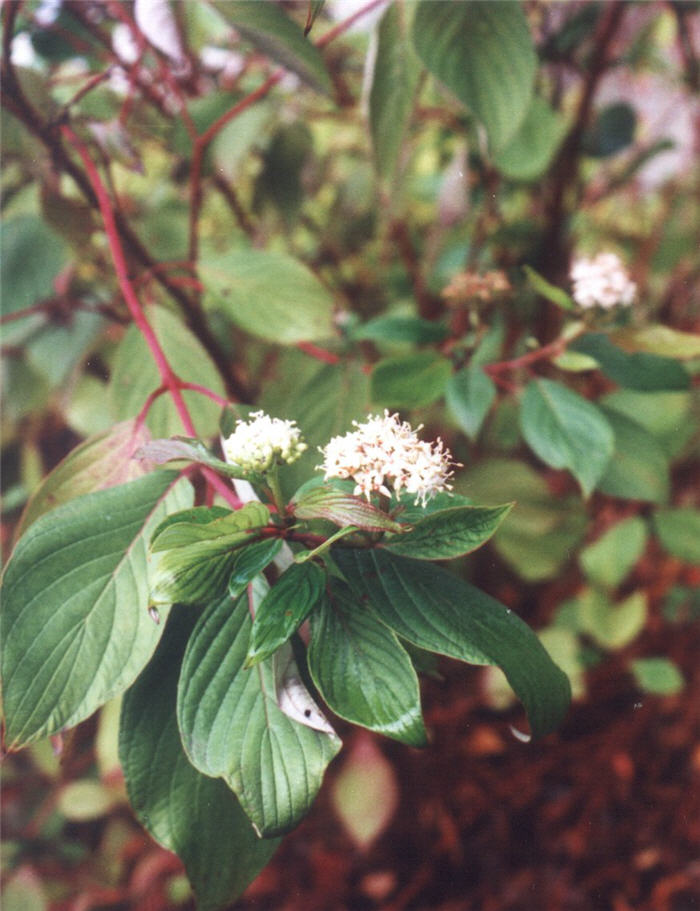| Botanical Name: Cornus sericea | |
| Common Name: Redtwig or Red osier Dogwood |

-
Anatomy
-
Culture
-
Design
Plant Type
Shrub
Height Range
6-12'
Flower Color
White
Flower Season
Spring
Leaf Color
Green, Light Green
Bark Color
Red
Fruit Color
White
Fruit Season
Winter, Fall
Sun
Full, Half
Water
Medium, Extra in Summer
Growth Rate
Moderate
Soil Type
Sandy, Clay, Loam
Soil Condition
Average, Rich, Well-drained, Moist
Soil pH
Neutral, Basic
Adverse Factors
Invasive
Design Styles
English Cottage, Japanese, Meadow, Seascape, Wetlands, Native Garden, Woodland
Accenting Features
Fall Color, Multi-trunk Tree, Showy Flowers, Specimen
Seasonal Interest
Winter, Spring, Summer, Fall
Location Uses
Background, Shrub Border, Foundation, Walls / Fences
Special Uses
Erosion Control, Filler, Hedge, Screen, Mass Planting, Naturalizing
Attracts Wildlife
Birds, Butterflies, Wildlife
Information by: Stephanie Duer
Photographer: Elkhorn Nursery
Photographer: Elkhorn Nursery
-
Description
-
Notes
Red osier dogwood is a deciduous shrub that adds needed color to the winter landscape. Upright to rounded form, growing 6 to 9 feet tall and wide, its new wood is bright red, creating a fabulous accent any time of year. Leaves are a medium green, turning a reddish purple in fall. Creamy white flowers occur in spring and contrast attractively with burgundy colored young twigs. Flowers are followed by white fruit. Attracts birds and butterflies. A good choice in a landscape that borders one of our riparian corridors...there are some planted at the 900 South Wetland.
Grow in sun to part shade in organic-rich soils that are well drained, though it will tolerate nearly boggy conditions. Best red stem color occurs on young stems, so though not necessary, some gardeners choose to remove 20-25% of the oldest stems in early spring of each year to stimulate growth of new stems. As an alternative to annual pruning, some gardeners prune all stems close to the ground in early spring every 2-3 years to renew. Any loss of flowers through spring pruning is not terribly significant since the small flowers of this dogwood are rather ordinary. Formerly listed as C. stolonifera.